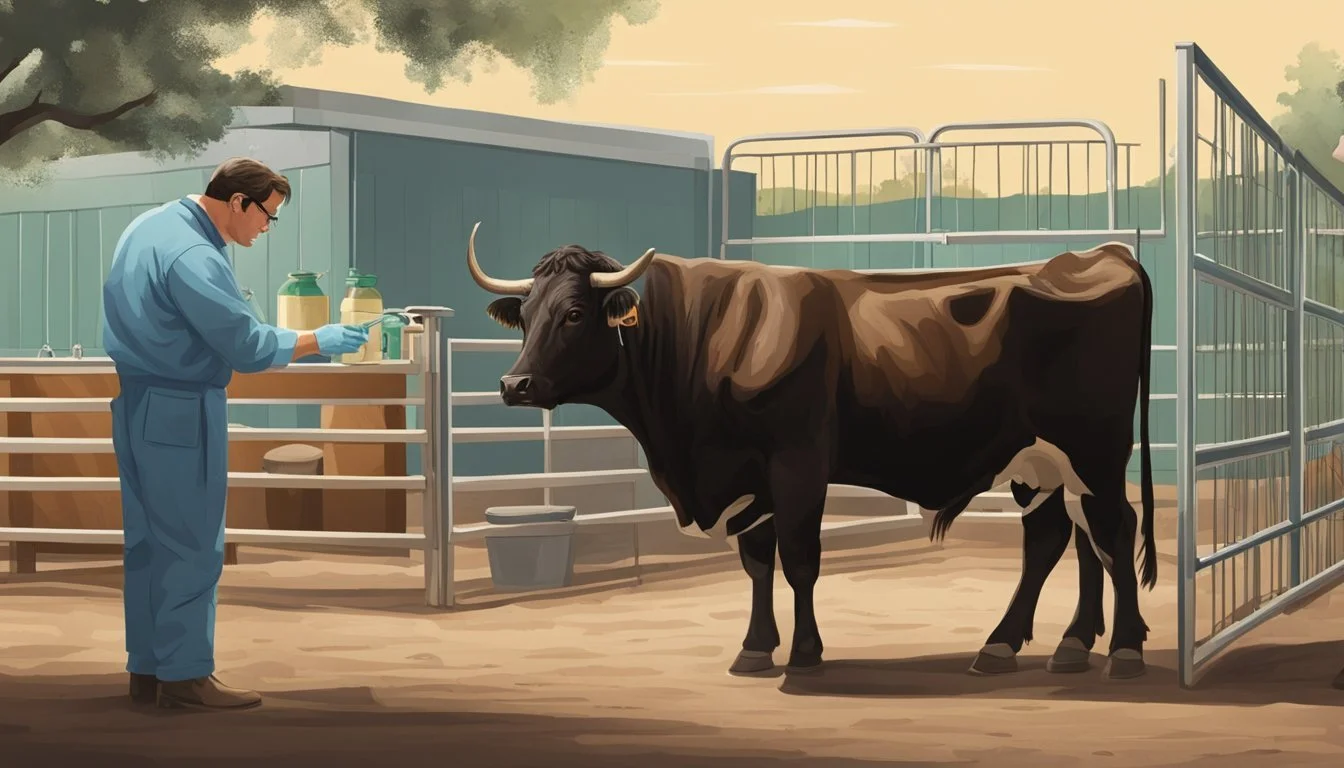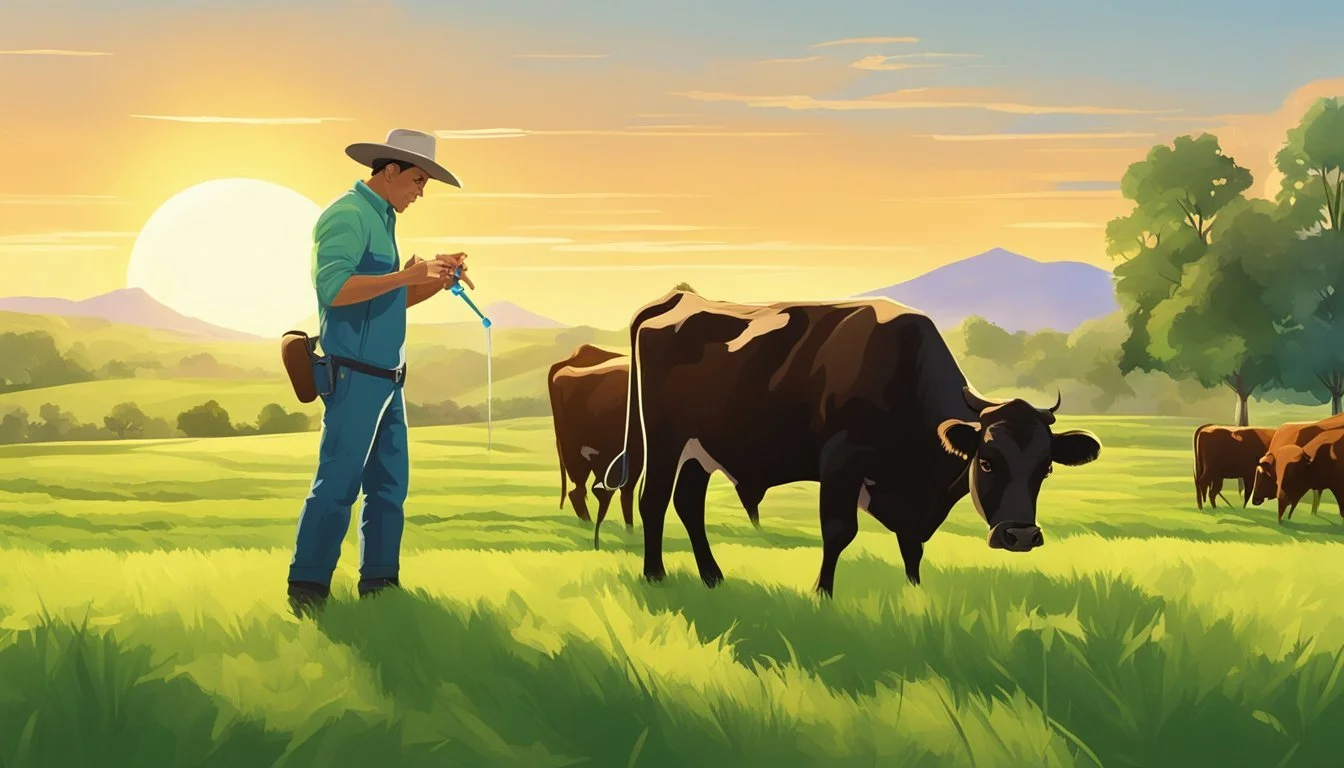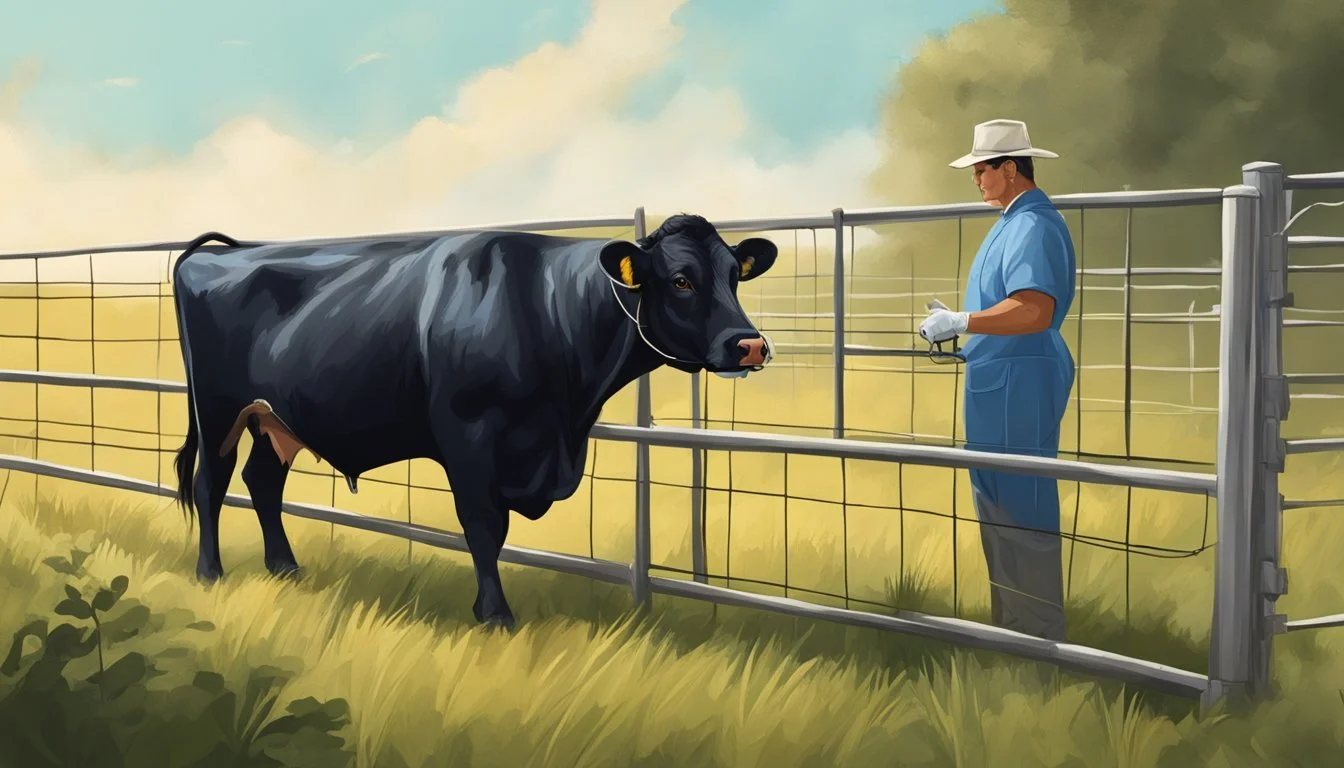How to Create an Effective Dexter Cattle Vaccination Schedule
Your Step-by-Step Guide
Creating an effective vaccination schedule for Dexter cattle is a cornerstone of maintaining a healthy herd. Vaccinations play a vital role in preventing a range of bacterial, viral, and protozoal diseases that can otherwise compromise the well-being of these animals. By administering vaccines, farmers and cattle handlers enable the animal’s immune system to better combat potential health threats, ensuring the livestock remain productive and in good condition.
When developing a vaccination program, several factors must be taken into account. These include the specific risks associated with the geographic area, the prevalent diseases, the life stage of the cattle, and the potential exposure to pathogens. For Dexter cattle, a specialized breed known for its hardiness and smaller size, vaccination protocols may differ slightly from those of larger beef breeds. It is crucial to consult with a veterinarian to tailor a vaccination schedule that aligns with the needs of Dexter cattle, taking into consideration the timing of vaccine administration relative to the breeding cycle and other herd management practices.
Moreover, a well-designed vaccination schedule must consider the types of vaccines available. Live, attenuated vaccines and killed vaccines each have their distinct advantages and protocols for use. The choice between them should be informed by the operation’s specific circumstances, including whether the herd includes pregnant cattle or calves at various ages. Ultimately, the goal of vaccination is to provide a cost-effective means to protect the health of the herd, thereby safeguarding the investment made in these animals and ensuring their welfare.
Understanding Cattle Vaccines
Creating an effective vaccination schedule for Dexter cattle hinges on the understanding of various cattle vaccines, their handling, and the diseases they combat. Careful management of these elements is crucial in safeguarding the health of the herd.
Types of Vaccines
Cattle vaccines are generally categorized into live vaccines and killed vaccines. Live vaccines, also known as modified live vaccines (MLV), contain a version of the living microorganism that has been weakened. They are designed to provide robust and long-lasting immunity, often with fewer doses compared to killed vaccines. Examples include vaccines for infectious bovine rhinotracheitis (IBR) and bovine viral diarrhea (BVD).
On the other hand, killed vaccines contain inactivated bacteria or viruses. While they typically offer a safer alternative to live vaccines, they may require booster shots to achieve the desired level of immunity. Booster vaccinations are particularly necessary for young animals encountering their primary immunization and for reinforcing the effects of killed vaccines.
Common Diseases and Pathogens
Vaccination schedules should address the most common and impactful diseases affecting cattle. These include but are not limited to:
Viral Diseases: BVD, IBR, bovine respiratory syncytial virus (BRSV), and others, which can lead to conditions such as bovine respiratory disease.
Bacterial Diseases: Leptospirosis, brucellosis, pasteurella multocida, campylobacter fetus, which are responsible for reproductive and respiratory problems.
Protozoal Diseases: Trichomoniasis, a reproductive disease in cattle caused by a protozoan parasite.
Vaccine Storage and Handling
Proper storage and handling are paramount for the potency and efficacy of vaccines. Key guidelines include:
Storage: Vaccines should be kept refrigerated at the temperature specified on the product label, often between 2°C to 7°C (35°F to 45°F).
Transportation: During transport, vaccines must be kept cool to maintain their effectiveness. Ice packs and insulated containers are essential.
Syringe Use: Never mix different vaccines in the same syringe unless explicitly approved by the manufacturer. Using separate syringes for each vaccine is the standard practice to avoid inactivation of components.
Each step must be meticulously followed as per the manufacturer's instructions to ensure the health of the cattle herd and the success of the vaccination program.
Developing a Vaccination Schedule
Creating an effective vaccination schedule is pivotal in maintaining the health and productivity of Dexter cattle. It is grounded in understanding the specific health risks and optimizing the timing of vaccinations for maximum protection.
Assessing Herd Health and Risks
It is essential to evaluate the overall health and risk factors affecting a herd. This includes age distribution, previous health records, nutritional management, and potential exposure to parasites and pathogens. For Dexter cattle, a veterinarian should review the herd's environment and management practices to tailor vaccination protocols that reduce risks of disease.
Weaning and breeding season are critical times when stress can lower immunity, thus requiring strategic vaccination timing.
The potential of parasitic infection should be assessed to determine the need for concurrent parasite control measures.
Importance of Timing
The efficacy of a vaccination program hinges on precise timing to ensure robust immunity when cattle are most at risk.
Administer pre-weaning vaccinations to calves to minimize stress-related health dips.
Schedule booster shots as required to maintain immunity.
For breeding herds, plan vaccinations well before the breeding season to ensure peak immunity without interfering with reproduction.
Age Group: Calves, Vaccination Event: Initial vaccines, Boosters, Ideal Timing: Pre-weaning, 4-6 months old
Age Group: Yearlings, Vaccination Event: Pre-breeding, Boosters, Ideal Timing: Prior to breeding season
Age Group: Adult Cattle, Vaccination Event: Annual vaccinations, Boosters, Ideal Timing: Late spring or early fall
Spring vaccinations often coincide with green grass availability, promoting better nutrition and a stronger response to vaccines.
Fall vaccinations should focus on cows post-breeding and pre-calving to boost colostral immunity transfer to newborns.
Executing the Vaccination Protocol
To maintain herd health, executing a vaccination protocol meticulously is crucial. This includes careful administration of vaccines as per the schedule, vigilance for possible adverse reactions, and concise record keeping to track the immunization status of each animal.
Administering Vaccines
Vaccinating Dexter cattle should follow a systematic approach to optimize the immune response. Calves typically receive their first round of vaccines between 2 and 4 months of age, including boosters to amplify the immune system response. Heifers and bulls require specific vaccines before entering the breeding cycle. Administration of dewormer may coincide with vaccination to control parasites. Injection sites and methods must adhere to the product guidelines—subcutaneous or intramuscular—as incorrect administration can impact vaccine efficacy and safety.
Before administering:
Confirm the vaccine is within its expiry date.
Ensure proper syringe and needle hygiene.
Restrain the animal to minimize stress and risk of injury.
During administration:
Follow label instructions for dosage.
Rotate injection sites if multiple vaccines are given.
Monitoring for Adverse Reactions
After vaccination, it's imperative to monitor cattle for signs of adverse reactions such as swelling, lethargy, or allergic responses. Immediate action can mitigate health issues and inform future health management strategies. Antibody titers can be tested to gauge the animal's immunization level, ensuring that the vaccine has elicited an adequate immune system response.
Signs to watch:
Excessive swelling at the injection site.
Behavioral changes indicating discomfort or sickness.
Record Keeping and Identification
Accurate record keeping is essential for tracking vaccinations and managing cattle health over time. Records should include vaccine type, date of administration, identification of administered cattle, and any booster follow-up dates. Each Dexter should have a unique identification tag or branding for easy tracking, especially after management practices like dehorning or castration, which might coincide with vaccination events.
Essential record details:
Animal identification number (tag or brand).
Date and type of vaccine and dewormer administered.
Notes on any adverse reactions or additional treatments given.
Life Stage Specific Strategies
Designing an effective vaccination schedule for Dexter cattle is critical to herd health. This section focuses on tailoring vaccine administration according to the life stages of the livestock—calves, heifers, during breeding, pregnancy, and for bulls. Each life stage presents unique health challenges that require specific vaccination strategies.
Vaccinating Calves and Heifers
Calves are most vulnerable to diseases early in life. They initially acquire immunity through colostrum intake, which contains antibodies from the mother. It's vital to ensure colostrum feeding occurs within the first few hours of life. A vaccination protocol for calves should begin once the passive immunity wanes. Core vaccinations for calves typically include protection against Bovine Respiratory Syncytial Virus (BRSV), Parainfluenza-3 (PI3), Infectious Bovine Rhinotracheitis (IBR), and Bovine Viral Diarrhea (BVD).
At 2-4 months:
Vaccinate against IBR, BVD, PI3, and BRSV
Administer Leptospirosis vaccine
For replacement heifers, the focus is on controlling reproductive diseases that could impact fertility. Incorporating vaccinations for Bovine Viral Diarrhea (BVD) and Leptospira (Lepto) is crucial before breeding commences.
Pre-breeding (6-8 months):
Repeat core vaccinations
Administer vaccine for Lepto to help prevent reproductive losses
Vaccination During Breeding and Pregnancy
Vaccination protocols should adapt as cattle enter the breeding phase, with timing adjusted to minimize stress. The intent is to protect the reproductive health of the herd and ensure the development of healthy calves and pregnancy maintenance.
Prior to breeding:
Lepto and IBR vaccines are important to enhance reproductive efficiency and prevent abortions.
For pregnant cows, consider the risk of vibriosis and brucellosis, adjusting protocols accordingly. Pay special care to not use modified live vaccines that can potentially harm the fetus.
During pregnancy checks:
Vaccinate with killed vaccines as a booster for core diseases
Management of Bulls' Health
Bulls require a tailored vaccination protocol given their role in natural breeding or as semen donors for artificial insemination. Protecting bulls against reproductive diseases is crucial to maintain herd genetics and productivity.
Year-round:
Vaccinations for IBR and BVD are essential to prevent transmission during breeding
Regular health checks and vaccinations for Lepto can prevent the spread of reproductive diseases
Prior to breeding season:
Booster vaccines should be administered well in advance to ensure immunity is at its peak during the breeding period
Through life stage specific strategies, Dexter cattle can be protected against myriad health threats with a schedule adjusted for calves, during breeding and pregnancy, and for bull management. This targeted approach helps in maintaining a thriving and productive herd.
Managing Vaccination in Different Seasons
Developing an effective Dexter cattle vaccination schedule requires careful consideration of seasonal changes that can affect disease incidence and cattle stress. Vaccination timing should be strategically planned to ensure peak immunity during periods of high disease risk and to align with key herd management events.
Spring Vaccination Strategies
In spring, calves may face increased exposure to pathogens like the bovine respiratory syncytial virus during the breeding season. Dexter cattle farmers should:
Administer core vaccinations prior to the onset of breeding to reduce stress on pregnant cows and to protect newborn calves.
Schedule vaccinations around calving and breeding, avoiding periods of peak stress.
Table 1: Core Spring Vaccinations
Disease: Bovine Respiratory Syncytial Virus, Vaccine Type: Modified live or killed, Timing: Before breeding season
Disease: Clostridial diseases (e.g., Blackleg), Vaccine Type: Killed vaccine, Timing: At branding or prior to turnout
Farmers should bear in mind that spring weather can fluctuate, which may affect vaccine storage and handling.
Autumn Considerations for Vaccination
During fall, weaning and culling introduce stress that can leave cattle vulnerable to infections. It's also a preparation period for the colder months when nutrition and immune response are critical for herd health.
Vaccinations in autumn should be timed to bolster immunity before weaning stress and the incidence of cooler weather diseases.
Booster shots for spring vaccinations may be necessary to maintain immunity through the harsher conditions of winter.
Table 2: Core Autumn Vaccinations
Disease: Respiratory diseases (e.g., BRSV), Vaccine Type: Modified live or killed, Timing: Pre-weaning and/or pre-culling
Disease: Clostridial diseases, Vaccine Type: Killed vaccine, Timing: Post-weaning
Additionally, farmers should monitor for heat stress in fall, adjusting vaccination schedules as necessary to avoid peak daytime temperatures.
Special Considerations for Herd Health
Creating an effective Dexter cattle vaccination schedule requires a multifaceted approach that includes biosecurity measures, understanding the role of nutrition, and leveraging veterinary expertise to ensure optimal herd health.
Biosecurity and Preventative Measures
In Dexter cattle management, maintaining stringent biosecurity is key in preventing the spread of infectious diseases. Strategies include quarantining new animals, implementing proper sanitation protocols, and controlling vectors. Preventive measures such as regular deworming help control parasites that can compromise the cattle's immune system. It is crucial to have a plan in place for dealing with clostridial diseases and protozoal infections, which can rapidly affect a herd if not proactively addressed.
Nutrition and Vaccine Efficacy
The role of nutrition in Dexter cattle's vaccination efficacy cannot be overstated. Cattle must have access to a balanced diet, rich in protein and trace minerals, which are essential for a robust immune system and an adequate antibody response. Minerals like zinc and selenium are vital for immunity and vaccine effectiveness. Proper nutrition ensures that vaccinations, as biological products, work to their full potential, providing a strong defense against reproductive and respiratory diseases.
Utilizing Veterinary Consultation
Consultation with a veterinarian plays a pivotal role in successful health management. They provide expertise to tailor vaccination schedules to the specific needs of a Dexter herd, taking into account the risk of diseases such as endotoxin-related conditions. This includes determining the right pharmaceutical products to use and the most beneficial timing of administration to optimize immunity. A veterinarian's insight helps in developing strategies for prevention of disease and maximizes the health and productivity of the herd.
Legal and Industry Standards
Creating an effective vaccination schedule for Dexter cattle involves maintaining strict adherence to legal requirements and staying current with industry standards. Producers must comply with regulations, continually educate themselves on the latest research, and rigorously follow vaccine labels to ensure the health and safety of their animals and the quality of their products.
Regulatory Compliance
In the United States, vaccination protocols for cattle, including Dexter breeds, must align with state and federal regulations. The USDA oversees animal vaccine approval and distribution, ensuring that pharmaceutical products are safe and effective. Producers need to ensure that their vaccination practices are in accordance with legal requirements to avoid penalties.
Staying Updated with Vaccine Research
Ongoing research conducted by institutions like Kansas State University contributes to advancements in vaccine efficacy. Producers should actively seek out new information on vaccinations to optimize their herd health management strategies. This due diligence helps in selecting the right vaccines that provide adequate protection for the herd.
Understanding Label Instructions
Vaccine labels encompass crucial information including dosage, handling, and storage instructions. Proper interpretation of this information is imperative for the safety and effectiveness of the vaccine. It is the responsibility of cattle owners to ensure that every pharmaceutical product is administered in accordance with its label to uphold both industry standards and regulatory compliance.
Incorporating these practices into a Dexter cattle vaccination schedule not only protects animal health but also underscores the commitment of the industry to public safety and animal welfare.







